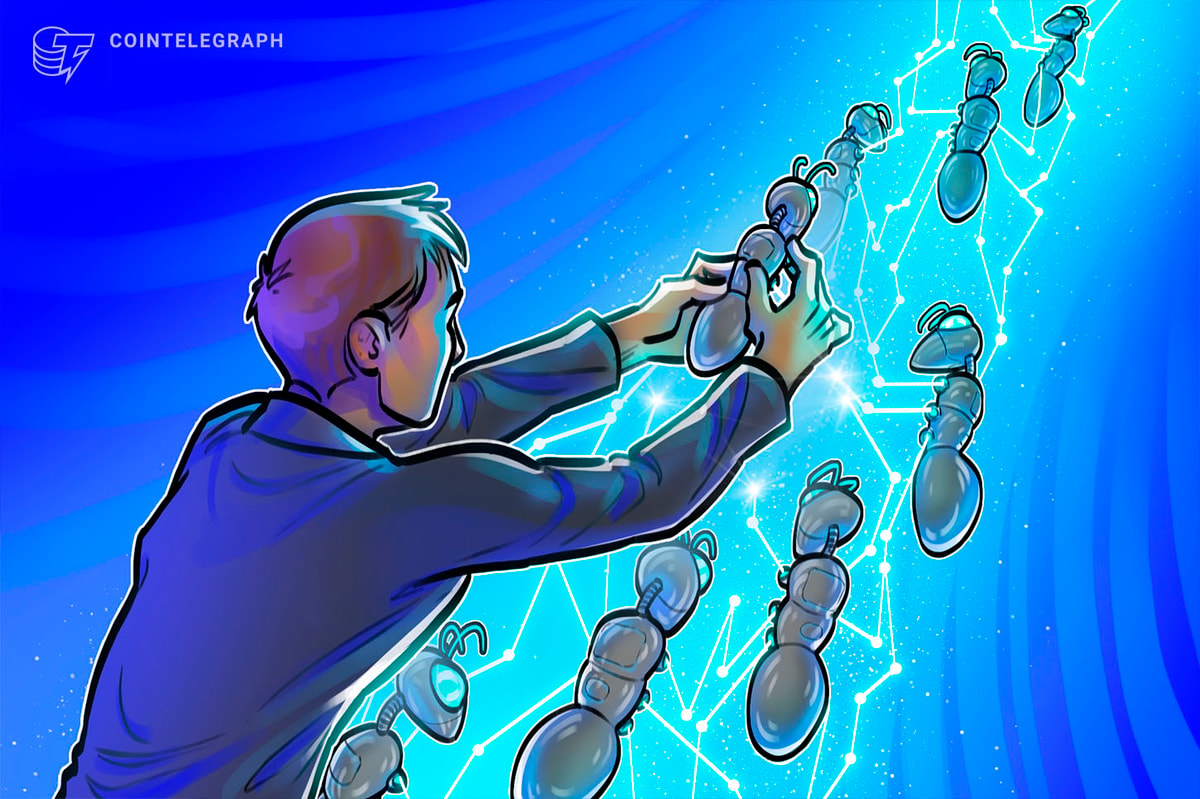
Ethereum’s chief scientist also called on Layer 2 developers to prioritize cross-L2 interoperability and improving decentralization.
Ethereum’s co-founder and chief scientist, Vitalik Buterin, believes Ethereum developers need to turn their attention to balancing the needs of web3 newcomers with veteran dApp users.
During an Aug. 1 appearance at the BaseCamp Summit, Buterin told Jesse Pollak, the creator of Base, that the Ethereum ecosystem’s growth has now enabled it to support many millions of users.
“As an ecosystem, we’re making this big transition from making mostly these small-scale applications that are kind of clunky… to things that actually, if they succeed, really can be adopted by tens of millions of people,” Buterin said. “The big goal [is] to make applications which are easy and friendly enough for regular people to use, but, at the same time, satisfy all of the core values of why we are in the space in the first place,”
Buterin argued that with attention shifting away from Ethereum Layer 1 mainnet towards its growing Layer 2 and application ecosystem, developers must now find ways of appealing to crypto users of all skill levels without relying on centralized infrastructure.
“We want applications that are really friendly to people coming into crypto for the first time,” Buterin continued. “At the same time, we absolutely don’t want applications that lead to a crypto world where we have decentralized infrastructure theoretically underneath but absolutely everyone is interacting with the thing through a Google account.”
While Buterin acknowledged that few solutions designed for beginners will also appeal to advanced users, he asserted that finding ways to cater to both audiences will be key in unlocking mass adoption. “You want something that works for one and works for the other, and gives people a good opportunity to transition from one to another,” he said.
Buterin also highlighted the role that CeFi firms like Coinbase, the company behind Base, can play in helping to bring surface-level crypto users on-chain. “There is a whole bunch of users that are buying and holding coins, and the big question is what are the other things that we can help those tens of millions of users start to do?” Buterin said.
Improving cross-chain interoperability
Buterin stressed that developers must work on reducing the friction associated with transferring assets and accessing dApps across multiple Layer 2 networks.
“We want an Ethereum world which includes the Layer 2s, to feel like Ethereum and not feel like 34 different blockchains. Right now, we don’t have that yet,” Buterin said.
Buterin championed ERC-3370 and ERC-7683 as emerging upgrades seeking to simplify cross-chain transfers, also calling on developers working on account abstraction to prioritize research into improving interoperability across Layer 2 networks.
“If you think about what are the pieces of account abstraction that are currently not yet solved… I think having a good experience cross-chain is probably the biggest part,” Buterin said.
Base on track for Stage 1 decentralization by 2025
With developers increasingly focusing on Layer 2, Buterin also called on L2 developers to prioritize moving towards more decentralized architecture, doubling down on his recent assertion that rollup chains exhibiting Stage 0 decentralization should not be called “rollups” at all.
Stage 0 decentralization refers to Layer 2s that use a centralized mechanism for submitting state roots to the Ethereum mainnet for finalization.
Buterin described Stage 1 decentralization as maintaining “limited training wheels,” with the chain hosting a centralized security council with the ability to override permissionless state root submission in the event of a bug, contingent on consensus between the chain’s operator and security council. Stage 2 decentralization is attained when changes to the state root can only be made in the event of a bug, and all contract upgrades are subject to a 30-day delay.
Pollak asserted that Base will “definitely” achieve Stage 1 decentralization by 2025. The comments come after Base launched fault proofs on testnet last week, paving the way for Stage 1 decentralization.
“We’re going to be at Stage 1 with a security council and fault proofs live on mainnet in the next few months,” Pollak said.
Buterin also commended Optimism for its OP Mainnet attaining Stage 1 decentralization in June.
Related: Arbitrum Plots Stage 2 Decentralization With Permissionless Transaction Validation
Read More: thedefiant.io








 Bitcoin
Bitcoin  Ethereum
Ethereum  Tether
Tether  XRP
XRP  Solana
Solana  USDC
USDC  Dogecoin
Dogecoin  TRON
TRON  Cardano
Cardano  Lido Staked Ether
Lido Staked Ether  Wrapped Bitcoin
Wrapped Bitcoin  Hyperliquid
Hyperliquid  Sui
Sui  Wrapped stETH
Wrapped stETH  Chainlink
Chainlink  Avalanche
Avalanche  Stellar
Stellar  LEO Token
LEO Token  Bitcoin Cash
Bitcoin Cash  Toncoin
Toncoin  Shiba Inu
Shiba Inu  Hedera
Hedera  USDS
USDS  WETH
WETH  Litecoin
Litecoin  Wrapped eETH
Wrapped eETH  Polkadot
Polkadot  Monero
Monero  Binance Bridged USDT (BNB Smart Chain)
Binance Bridged USDT (BNB Smart Chain)  Ethena USDe
Ethena USDe  Bitget Token
Bitget Token  Pepe
Pepe  Pi Network
Pi Network  Coinbase Wrapped BTC
Coinbase Wrapped BTC  WhiteBIT Coin
WhiteBIT Coin  Aave
Aave  Uniswap
Uniswap  Dai
Dai  Bittensor
Bittensor  Ethena Staked USDe
Ethena Staked USDe  Aptos
Aptos  NEAR Protocol
NEAR Protocol  Cronos
Cronos  OKB
OKB  Jito Staked SOL
Jito Staked SOL  BlackRock USD Institutional Digital Liquidity Fund
BlackRock USD Institutional Digital Liquidity Fund  Internet Computer
Internet Computer  Ondo
Ondo  Ethereum Classic
Ethereum Classic